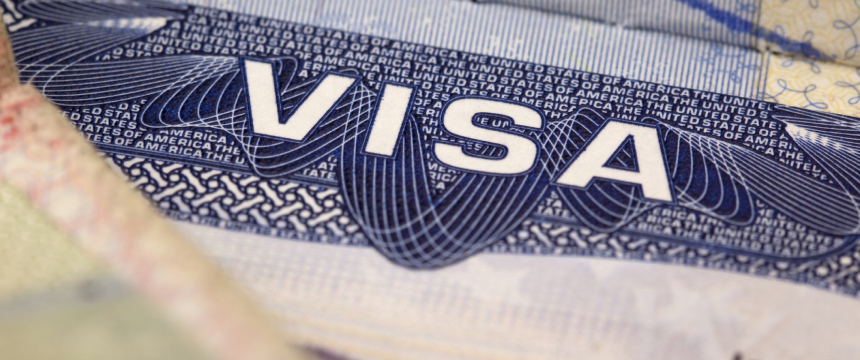DOL and DHS Amend Rules on Prevailing Wage and H-1B Requirements

President Trump’s Buy American, Hire American Executive Order encouraged the United States Department of Labor (DOL) and the United States Department of Homeland Security (DHS) to propose new rules and guidance that will better protect the interests of U.S. workers as DOL and DHS administer the federal immigration laws. In response, DOL has published a new rule that changes how the agency computes the prevailing wage applicable to certain permanent and temporary immigration classifications. The rule raises such wages across the board and is effective immediately. Similarly, DHS has issued a rule that amends key definitions and standards that apply to the H-1B temporary classification. Among other changes, the new rule limits the jobs that can qualify as “specialty occupations” and implements stricter standards for placing an H-1B employee at third-party worksites. The DHS rule is effective on December 7, 2020. Through these new rules, DOL and DHS seek to combat wage suppression and adverse working conditions that undermine job opportunities for U.S.workers (American citizens, permanent residents, refugees, and asylees).
DOL’s “Strengthening Wage Protections for the Temporary and Permanent Employment of Certain Aliens” Rule
DOL’s new rule applies to permanent resident cases that require labor certification (i.e., showing a shortage of qualified job applicants who are U.S. workers). An employer seeking permanent labor certification (also called “PERM”) must offer the job at or above the prevailing wage. In addition, the new rule applies to three temporary classifications for specialty occupations:H-1B, H-1B1 (limited to citizens of Chile and Singapore), and E-3 (limited to citizens of Australia). An employer seeking to employ foreign nationals in one of these temporary classifications must offer the higher of (1) the actual wage paid by the employer for the job when filled by individuals with similar qualifications or (2) the prevailing wage. The employer promises to pay this required wage by filing a Labor Condition Application (“LCA”) with DOL.
DOL relies on the Occupational Employment Statistics (OES) annual wage survey to compute the prevailing wage. DOL also states the prevailing wage in four levels: Level I (entry level); Level II (experienced); Level III (qualified); and Level IV (fully competent). Though its new rule, DOL has raised where it places the prevailing wage levels within the wage range for each occupation. The result is a significant increase in the applicable prevailing wage. The chart below shows DOL’s change.
| DOL Prevailing Wage Level | Percentile in OES Wage Survey under Prior Rule | Percentile in OES Wage Survey under New Rule |
| Level I | 17th percentile | 45th percentile |
| Level II | 34th percentile | 62nd percentile |
| Level III | 50th percentile | 78th percentile |
| Level IV | 67th percentile | 95th percentile |
To illustrate the impact of this change, under the prior rule, the 2020-2021 Level I prevailing wage for an electrical engineer in Pittsburgh, Pennsylvania was $66,976 (17th percentile of wage range). Under the new rule, that Level I wage is $92,851 (45th percentile of wage range).
As explained in the DOL’s “Implementation Frequently Asked Questions,” the new rule applies to any requests for prevailing wage determinations that are pending on or after October 8, 2020. Thus, even though an employer may have filed the prevailing wage request a few months ago, that pending request will be subject to the new wage levels. This will primarily affect employers that are commencing permanent labor certification applications. The news is better for employers with pending LCAs. DOL will not apply the higher wage levels to a pending LCA as long as the LCA was filed before October 8, 2020. DOL also will not apply the new regulation to reopen or otherwise affect any previously approved LCAs or permanent labor certification applications. DOL will not reconsider prevailing wage determinations issued under the prior rule.
DHS’s “Strengthening the H-1B Nonimmigrant Visa Classification Program” Rule
DHS’s new rule revises or clarifies several definitions and increases the amount of evidence required in an H-1B case. It also places tighter controls on placing H-1B employees at third-party locations. Here are some of the key changes:
Specialty Occupation Definition Narrowed:
- A specialty occupation is one that at a minimum requires attainment of at least a bachelor’s degree in a specific specialty to enter that occupation. Under the existing rule, this standard could be met by showing that the job offered is one for which a bachelor’s degree in a specific area (1) was normally required, (2) was usually associated with the job, or (3) was common to the industry. While still a high standard, the employer could meet DHS’s challenge by showing that the degree requirement is typical for the job even if not uniformly required across the occupation or industry. Under the updated definition, an employer must show that at least a bachelor’s degree in a specific specialty is always required. The employer may do so by showing that a bachelor’s degree in a specific specialty is required by (1) the occupation as a whole, (2) the specific industry, or (3) the employer (with an explanation of why there is a particularized degree need). The employer also may meet the “always” standard by showing that the job is so specialized, complex, or unique to necessitate the degree requirement.
- An employer must show a direct relationship between (a) the required degree field and (b) the job duties in order to meet the specialty occupation requirement. If the employer will accept a degree in more than one field (e.g., electrical engineering or computer engineering), the employer must show that each acceptable degree field is directly related to the job offered. If a job requires multiple degrees (economics degree and a law degree), the employer must show a direct relationship between each degree field and the job duties.
- An employer that accepts too wide a range of degree fields may fail to meet the specialty occupation definition. Finally, if a job requires only a general degree with no specialization (e.g., general business degree, general engineering degree), the job is not a specialty occupation. This last change has long been DHS’s interpretation, but now it is written in the federal rule.
United States Employer Definition Revised
- DHS made several changes to this definition to address concerns about staffing companies that assign foreign nationals in H-1B status to third-party worksites and that sometimes commence cases based upon a speculative need. In the new rule, DHS emphasizes that contractors seeking H-1B authorization must function as employers. The revised definition confirms that an employer must engage the foreign national in H-1B status to work and must make a “bona fide, non-speculative job offer.”
- The United States employer must show that actual work is available at the time the employer asks for the H-1B authorization to be effective.
Employer-Employee Relationship Clarified
- DHS revised this definition to confirm that the conventional understanding of an employer-employee relationship applies to H-1B cases. DHS lists a number of factors to consider, including not only the right to control the activities of the employee, but also the actual exercise of that control.
- Employers that will assign H-1B employees to third-party work sites will be required to submit substantial, additional evidence. The evidence must establish that the work to be performed comes within a specialty occupation and that the company seeking H-1B authorization will be able to maintain the employer-employee relationship even though the worksite will be at a third-party location. DHS will require evidence such as contracts with the customer, work orders, detailed letters from an official at the customer site, and other evidence.
Third-Party Worksite Definition Added
- The new rule defines “third-party worksite” for the first time in H-1B cases. It is a worksite, other than the foreign national’s residence in the United States, which is not (1) owned or leased or (2) operated by the company seeking H-1B authorization.
- When the foreign national will be assigned to a third-party site, DHS will limit the H-1B authorization to maximum increments of up to one year. Although an employer in this situation may ask to extend the H-1B authorization, such extension requests will bring the employer under frequent DHS review.
Authority for H-1B Site Visits Confirmed
- The new rule outlines the scope of DHS’s authority to conduct site visits. DHS may visit an employer’s headquarters, its satellite locations, or the location where the H-1B employee works or will work, including third-party worksites.
- DHS may deny a request for H-1B authorization or revoke existing H-1B authorization for any location where the employer or third-party worksite fails or refuses to cooperate during the site visit.
